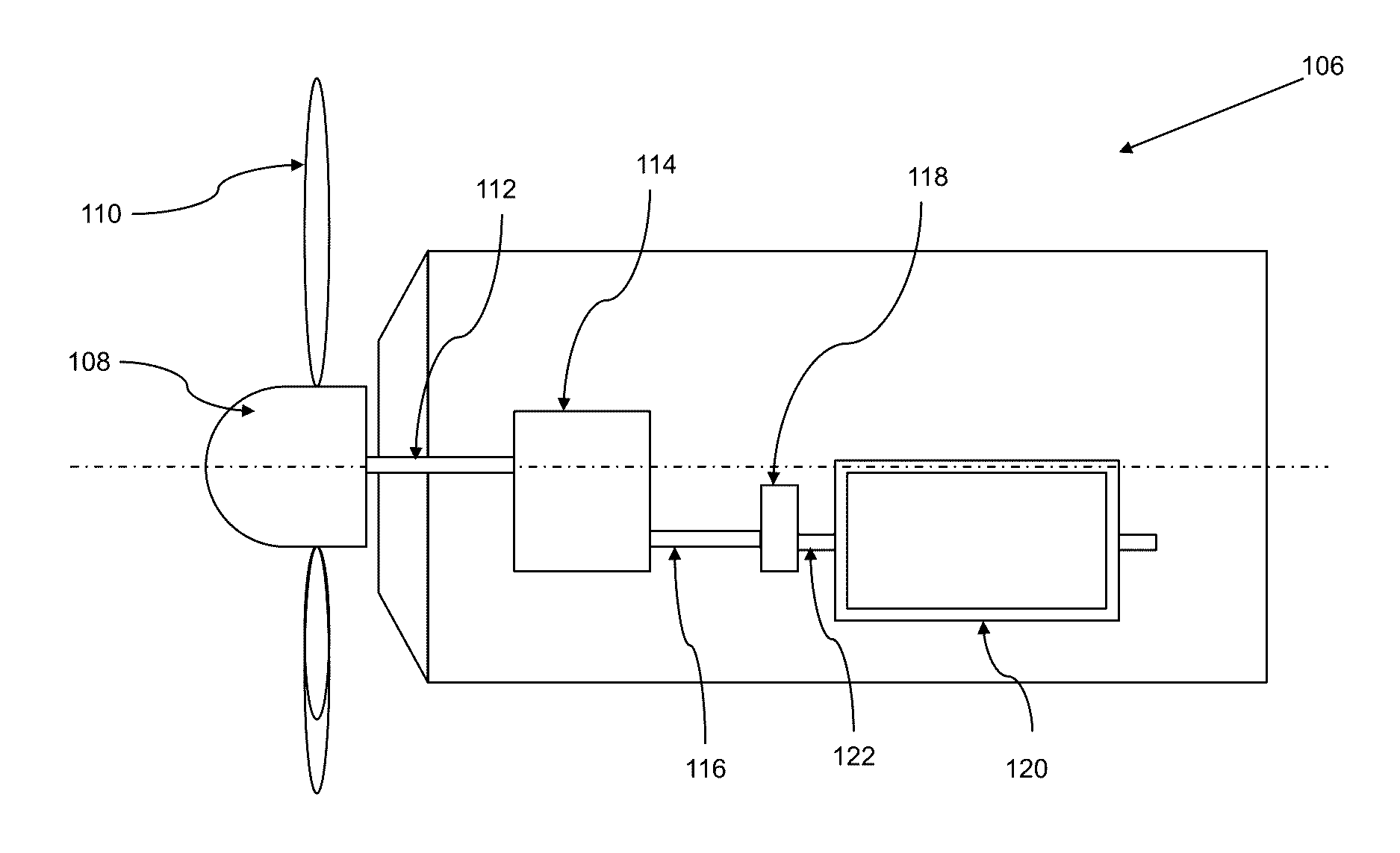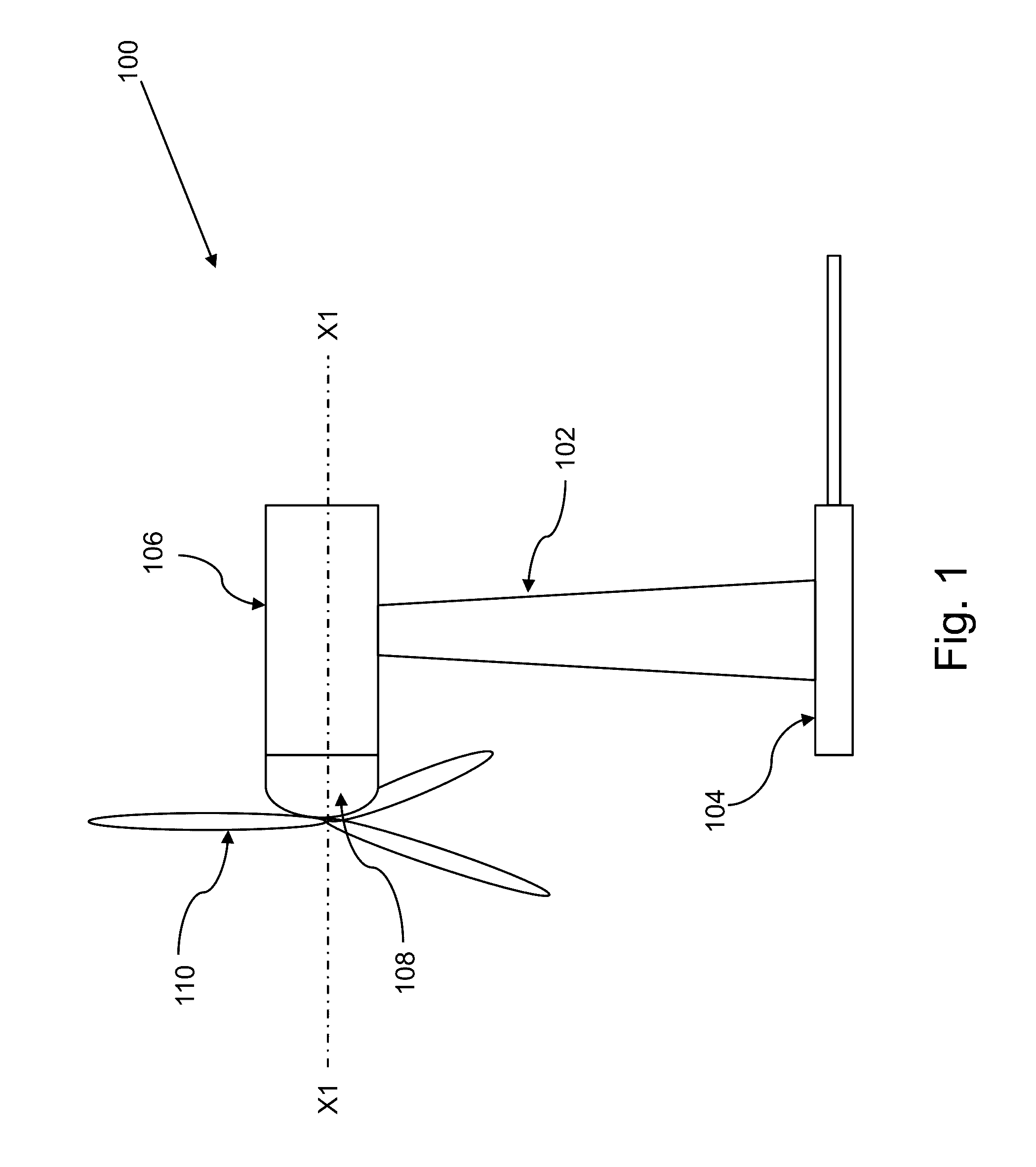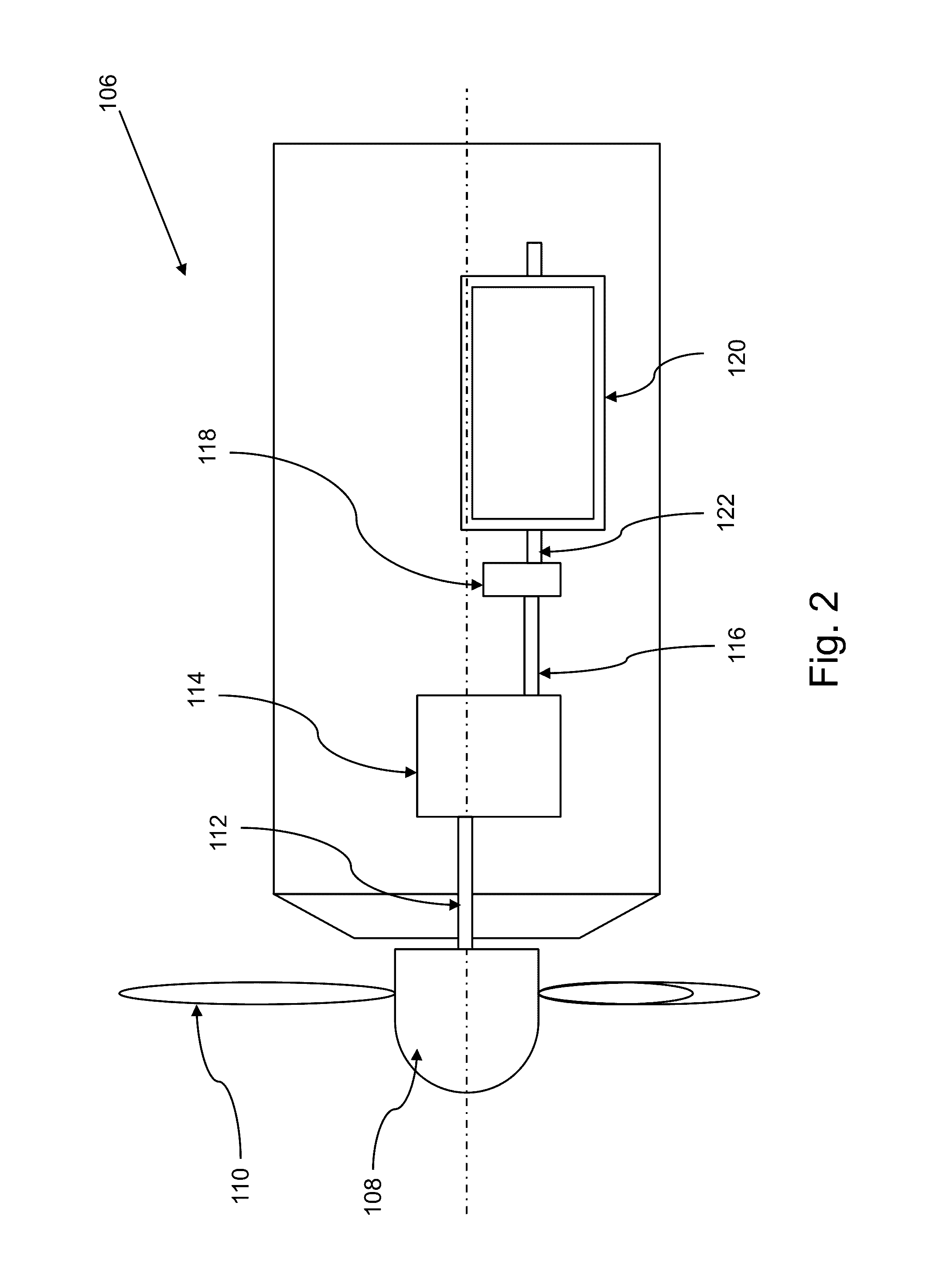Smart power management during voltage dip in wind turbines
a wind turbine and smart technology, applied in the field of wind turbines, can solve the problems of logics not improving the way the generator torque and pitch angle is determined, the voltage dip scenario is one of the most difficult operating cases, and the drive train oscillation is one of the most difficult to operate, so as to reduce mechanical load, minimize oscillation, and recover power production
- Summary
- Abstract
- Description
- Claims
- Application Information
AI Technical Summary
Benefits of technology
Problems solved by technology
Method used
Image
Examples
Embodiment Construction
[0017]While the present disclosure can take many different forms, for the purpose of promoting an understanding of the principles of the disclosure, reference will now be made to the embodiments illustrated in the drawings, and specific language will be used to describe the same. No limitation of the scope of the disclosure is thereby intended. Various alterations, further modifications of the described embodiments, and any further applications of the principles of the disclosure, as described herein, are contemplated.
[0018]The present invention is directed to a method of reducing wind turbine mechanical loads during and when recovering without stopping from a voltage dip in the grid. The wind turbine having a drive train, a wind turbine generator, a wind turbine controller and a converter control unit. The wind turbine controller and the converter control unit work in combination to minimize the oscillation generated due to voltage dip in the wind turbine 100. The method: Applies a...
PUM
 Login to View More
Login to View More Abstract
Description
Claims
Application Information
 Login to View More
Login to View More - R&D
- Intellectual Property
- Life Sciences
- Materials
- Tech Scout
- Unparalleled Data Quality
- Higher Quality Content
- 60% Fewer Hallucinations
Browse by: Latest US Patents, China's latest patents, Technical Efficacy Thesaurus, Application Domain, Technology Topic, Popular Technical Reports.
© 2025 PatSnap. All rights reserved.Legal|Privacy policy|Modern Slavery Act Transparency Statement|Sitemap|About US| Contact US: help@patsnap.com



